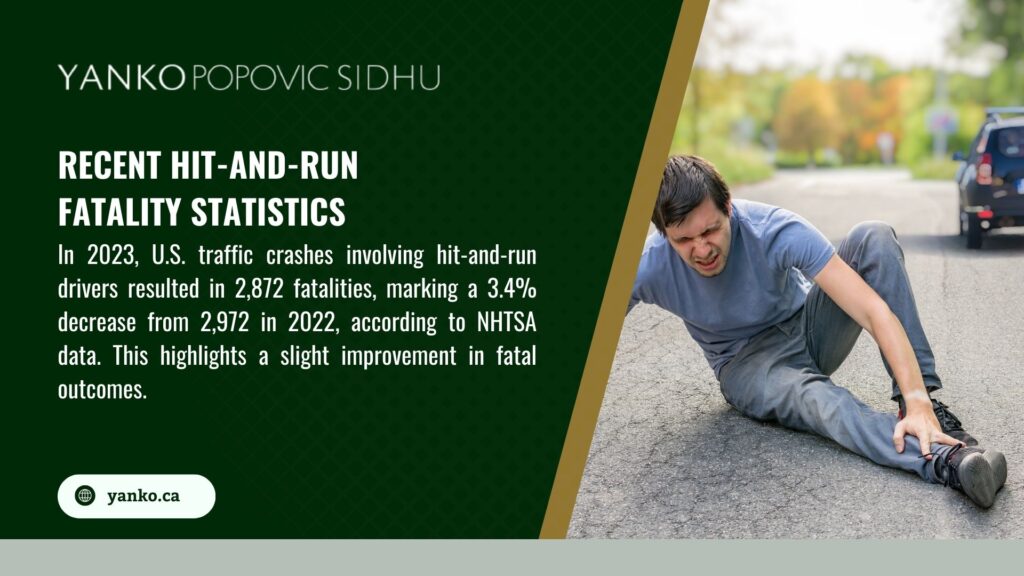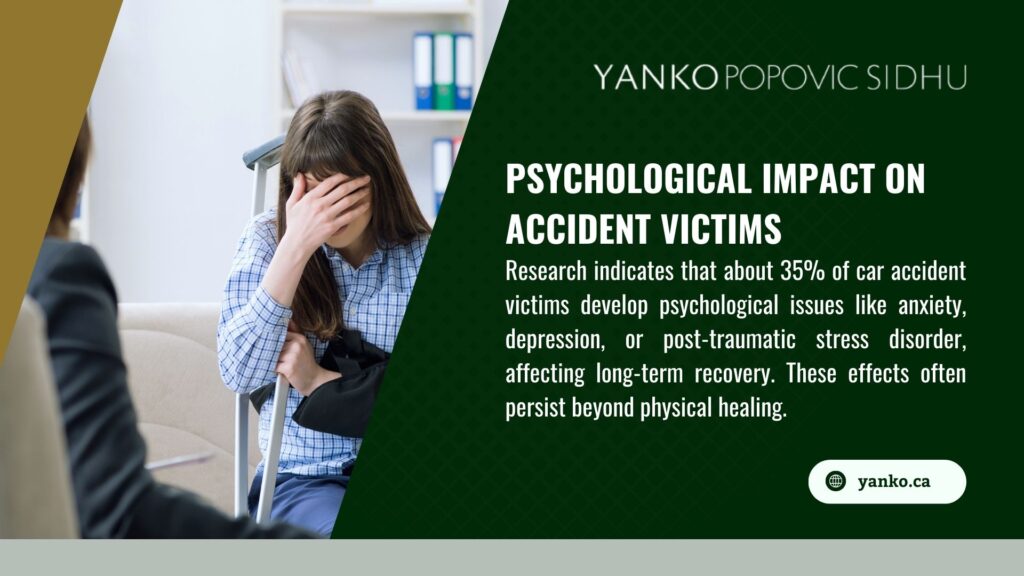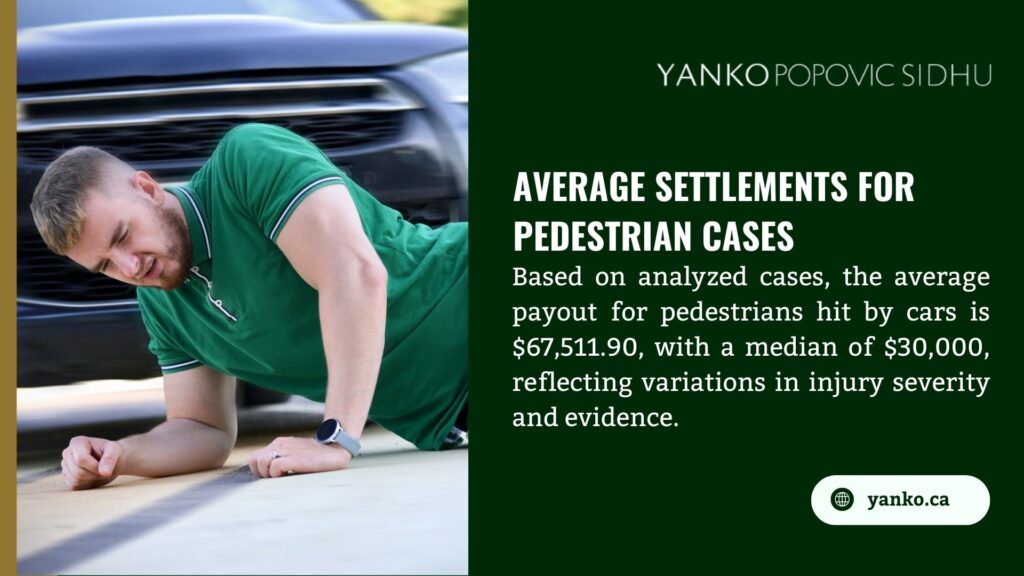Hit and run accidents create unique challenges for victims seeking compensation. When the responsible driver flees the scene, victims must navigate complex insurance claims and legal processes while dealing with injuries and property damage.
Statistics from the AAA Foundation for Traffic Safety show that approximately 682,000 hit-and-run crashes occur annually in the United States, with 737,100 incidents reported in 2015 alone. Canadian data from Statistics Canada indicates that over 300 pedestrian fatalities occur each year, with many involving fleeing drivers.
The financial impact on victims can be severe. Medical bills, lost wages, property damage, and ongoing rehabilitation costs accumulate quickly. Without the at-fault driver present to accept responsibility, victims often face insurance battles and reduced compensation options. Knowledge of hit and run settlement processes helps level the playing field.
Settlement Amount Ranges for Hit and Run Cases
Hit and run settlement amounts vary significantly based on case circumstances. Research indicates that hit and run settlement figures typically range from $10,000 to $200,000, though some cases exceed these amounts considerably.
Settlement categories generally break down as follows:
- Minor Injury Cases: Settlements between $10,000 and $50,000 typically involve soft tissue injuries, minor property damage, and limited medical treatment. These cases may include whiplash, minor cuts, or brief hospital visits.
- Moderate to Severe Injuries: Cases involving serious injuries often result in settlements ranging from $50,000 to $200,000. This category includes injuries requiring surgery, extended hospital stays, or ongoing rehabilitation.
- Catastrophic Injuries: Permanent disabilities, traumatic brain injuries, or spinal cord damage can generate settlements exceeding $200,000, potentially reaching into the millions depending on insurance coverage limits.
Some legal sources report higher average ranges, with certain regions seeing hit and run settlement amounts between $200,000 and $600,000 for cases involving substantial injuries and adequate insurance coverage.
Key Factors Affecting Settlement Values
Multiple variables influence final hit and run settlement amounts:
- Injury Severity and Medical Costs
The extent of physical harm directly impacts settlement calculations. Catastrophic injuries requiring long-term care generate higher compensation than minor injuries with quick recovery periods. Medical documentation becomes crucial for establishing injury severity and treatment necessity.
- Insurance Policy Limits
Available coverage often determines settlement ceilings. Victims typically rely on their own uninsured motorist coverage when the fleeing driver remains unidentified. Policy limits can restrict total compensation regardless of actual damages incurred.
- Evidence Quality and Documentation
Strong evidence supports higher settlements. Police reports, medical records, witness statements, and accident scene photographs help establish the incident’s circumstances and resulting damages. Poor documentation can significantly reduce settlement potential.
- Non-Economic Damages
Beyond medical bills and lost wages, victims may recover compensation for pain and suffering, emotional distress, and loss of life enjoyment. These non-pecuniary damages can substantially increase settlement values, particularly in cases involving permanent impairment or psychological trauma.

The Claims Process for Hit and Run Settlements
Initial Steps After an Incident
Proper actions immediately following a hit and run accident can significantly impact settlement outcomes:
- Police Reporting: Most jurisdictions require hit and run reporting within 24 hours. Official police reports create essential documentation for insurance claims and legal proceedings.
- Evidence Collection: Gathering witness information, photographing damage, and documenting the scene helps preserve critical evidence. This documentation becomes particularly important when the responsible party has fled.
- Medical Attention: Prompt medical evaluation creates important records linking injuries to the accident. Even seemingly minor injuries should receive professional assessment to prevent complications and ensure proper documentation.
- Insurance Notification: Contacting insurance carriers promptly initiates the claims process and ensures compliance with policy requirements.
Insurance Coverage Options
Hit and run victims typically rely on their own insurance coverage for compensation:
- Uninsured Motorist Coverage (UM/UIM): This coverage serves as the primary compensation source when the at-fault driver cannot be identified. Settlement amounts depend on policy limits – a $100,000 UM policy caps potential recovery at that amount regardless of actual damages.
- Personal Injury Protection (PIP): No-fault insurance states require PIP coverage that pays medical expenses and lost wages regardless of fault determination. This coverage provides immediate benefits while other claims develop.
- Medical Payments Coverage: MedPay helps cover medical expenses related to accident injuries without regard to fault. This coverage supplements other insurance benefits and can reduce out-of-pocket medical costs.
Maximizing Hit and Run Settlement Recovery
Professional Legal Representation
Insurance companies frequently offer inadequate initial settlements to hit and run victims. Adjusters understand that victims lack leverage when the responsible party has fled and often capitalize on this disadvantage.
Legal representation provides several advantages:
- Proper Damage Valuation: Attorneys understand how to calculate comprehensive damages including future medical needs, lost earning capacity, and non-economic losses. This expertise prevents victims from accepting settlements that fail to cover long-term needs.
- Insurance Negotiation: Experienced lawyers know insurance company tactics and can negotiate effectively for higher settlements. They understand policy language and coverage interpretation that laypeople often miss.
- Evidence Development: Legal teams can conduct thorough investigations, locate additional witnesses, and work with accident reconstruction specialists to strengthen cases.
Damage Calculation Methods
Hit and run settlement calculations typically follow established formulas:
- Economic Damages: These include quantifiable losses such as medical expenses, lost wages, property damage, and rehabilitation costs. Economic damages have clear monetary values supported by bills and documentation.
- Non-Economic Damages: Pain and suffering, emotional distress, and loss of life enjoyment fall into this category. These damages lack specific monetary values but can significantly increase settlement amounts.
Insurance companies often use multipliers to calculate non-economic damages, typically ranging from 1.5 to 5 times economic damages, depending on injury severity and case circumstances.
Special Considerations in Hit and Run Cases
Time Sensitivity and Case Development
Hit and run cases present unique timing challenges. Evidence collection becomes more difficult as time passes, witnesses become unavailable, and memories fade. The fleeing driver’s identity may never be established, limiting recovery options to the victim’s own insurance coverage.
Settlement timelines vary considerably. Simple cases may resolve within months, while complex cases involving severe injuries can take years to develop fully. Medical treatment must often reach maximum medical improvement before final settlement negotiations can conclude.

Pedestrian Hit and Run Cases
Pedestrian victims face particular vulnerability in hit and run incidents. The lack of vehicle protection typically results in more severe injuries and higher hit and run settlement amounts.
Pedestrian cases often involve catastrophic injuries requiring extensive medical care and long-term rehabilitation.
The settlement calculation process must account for the victim’s age, occupation, and life expectancy when permanent disabilities result. Future care costs, assistive equipment needs, and home modifications may factor into final settlement amounts.
Medical Complications and Additional Claims
Some hit and run victims experience medical complications during treatment that may warrant additional compensation.
When healthcare providers fail to meet appropriate standards of care, victims might have grounds for medical negligence compensation claims in addition to their hit and run settlements.
Knowing when to sue a hospital for negligence can help victims recover additional compensation for treatment complications or misdiagnosis issues.
Legal Strategy and Professional Guidance
Certain circumstances make professional legal assistance virtually mandatory for achieving fair hit and run settlement amounts:
- Severe Injury Cases: Any incident involving hospitalization, surgery, or permanent disability requires experienced legal guidance to ensure proper valuation and negotiation.
- Insurance Disputes: When carriers deny claims, dispute coverage, or offer unreasonably low settlements, legal representation becomes necessary to protect victim rights.
- Complex Liability Issues: Cases involving multiple insurance policies, out-of-state incidents, or commercial vehicles often require specialized legal knowledge.
- Future Care Needs: Injuries requiring ongoing medical care, rehabilitation, or permanent disability accommodations need comprehensive evaluation to ensure settlement adequacy.
Evaluating Legal Representation
Victims should consider several factors when selecting legal counsel for hit and run cases:
Experience with similar cases, track record of successful settlements, understanding of local insurance practices, and communication style all influence representation quality.
Attorneys who specialize in hit and run cases often achieve better outcomes than general practitioners.
Provincial and Jurisdictional Variations
Canadian Insurance Landscape
Canada’s provincial insurance systems create variations in hit and run settlement procedures and available compensation. Each province maintains different minimum coverage requirements, no-fault provisions, and statutory benefit structures.
Understanding provincial differences is important for evaluating settlement fairness and identifying all available compensation sources. Some provinces offer more generous accident benefits while others rely primarily on traditional tort-based recovery methods.
Limitation Periods and Filing Requirements
Time limits for hit and run claims vary by jurisdiction. Most provinces impose limitation periods ranging from one to six years for filing lawsuits, though insurance claims may have shorter deadlines.
Missing these deadlines can eliminate compensation rights entirely, regardless of case strength or damage severity. Prompt legal consultation helps ensure compliance with all applicable time limits.
Settlement Negotiation and Resolution
Insurance adjusters employ various strategies to minimize hit and run settlement payouts. Common tactics include disputing injury causation, questioning medical necessity, and rushing victims toward quick settlements before full damage assessment.
Understanding these approaches helps victims recognize inadequate offers and negotiate more effectively. Insurance companies often present initial offers as final or “fair” when significant room for negotiation exists.
Most hit and run cases settle without trial, but victims should understand litigation alternatives. Settlement offers certainty and faster resolution, while trials risk higher awards but also complete loss if unsuccessful.
The decision depends on settlement offer adequacy, case strength, available insurance coverage, and victim preferences regarding time and risk tolerance.

Securing Fair Compensation for Your Case
Professional legal guidance often proves essential for navigating insurance company tactics, properly valuing claims, and securing fair compensation. The difference between adequate and inadequate settlements can significantly impact victims’ financial recovery and future quality of life.
Victims deserve compensation that addresses not only immediate expenses but also long-term consequences of their injuries. Secure experienced legal representation for your hit and run settlement case.
The attorneys at Yanko understand the complexities of hit and run claims and work diligently to maximize client compensation. Our experience with insurance negotiations, damage evaluation, and settlement strategy helps victims achieve fair recovery for their injuries and losses.







